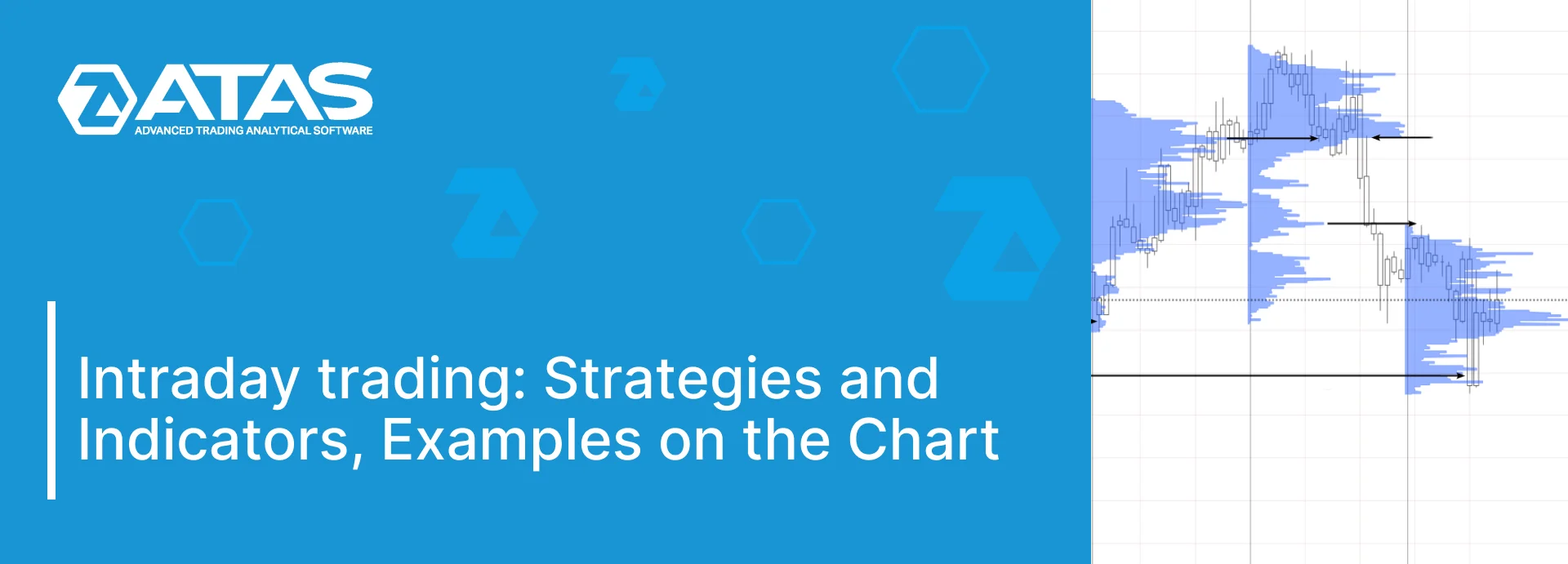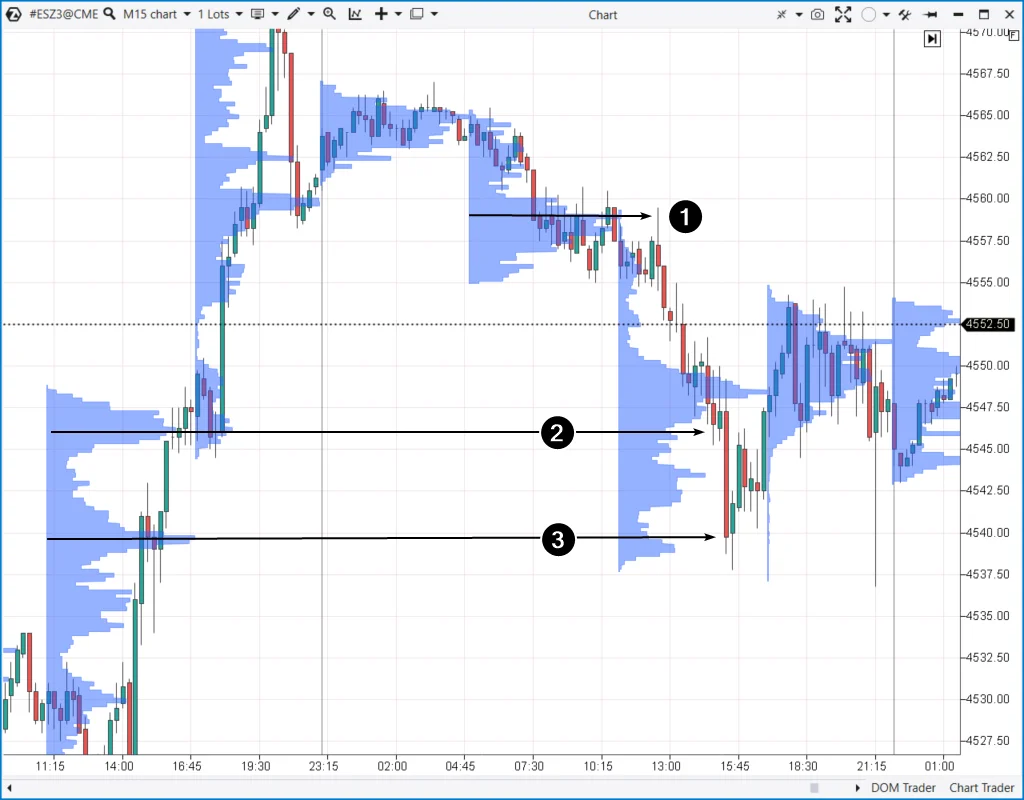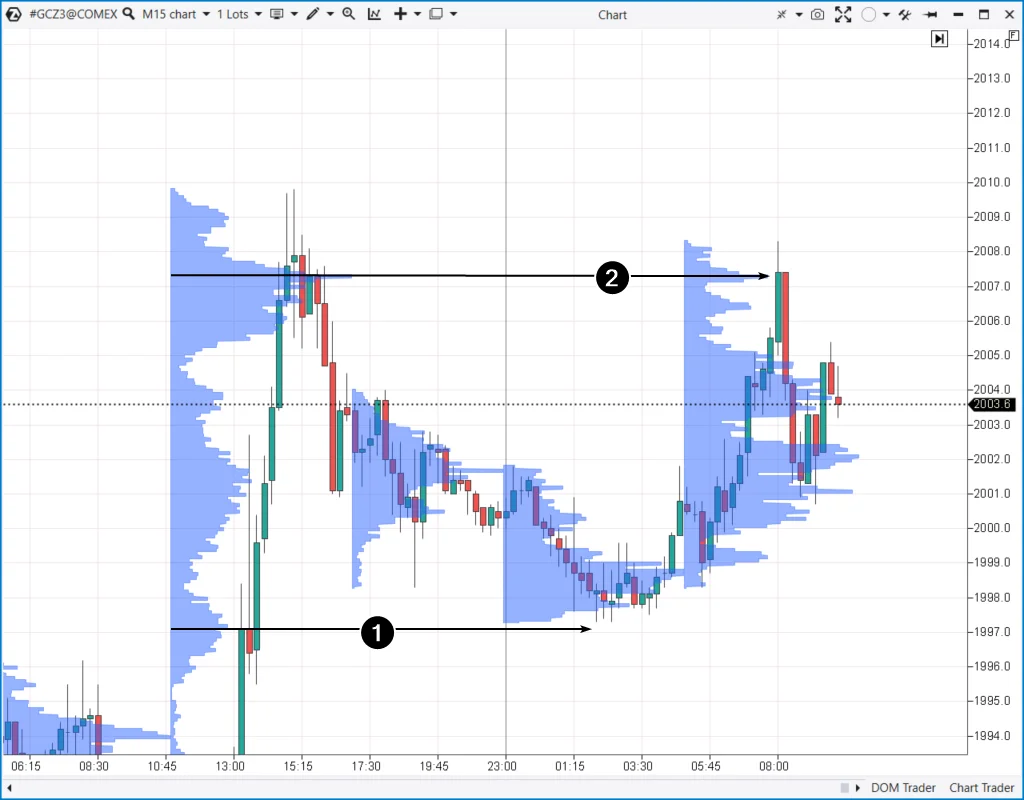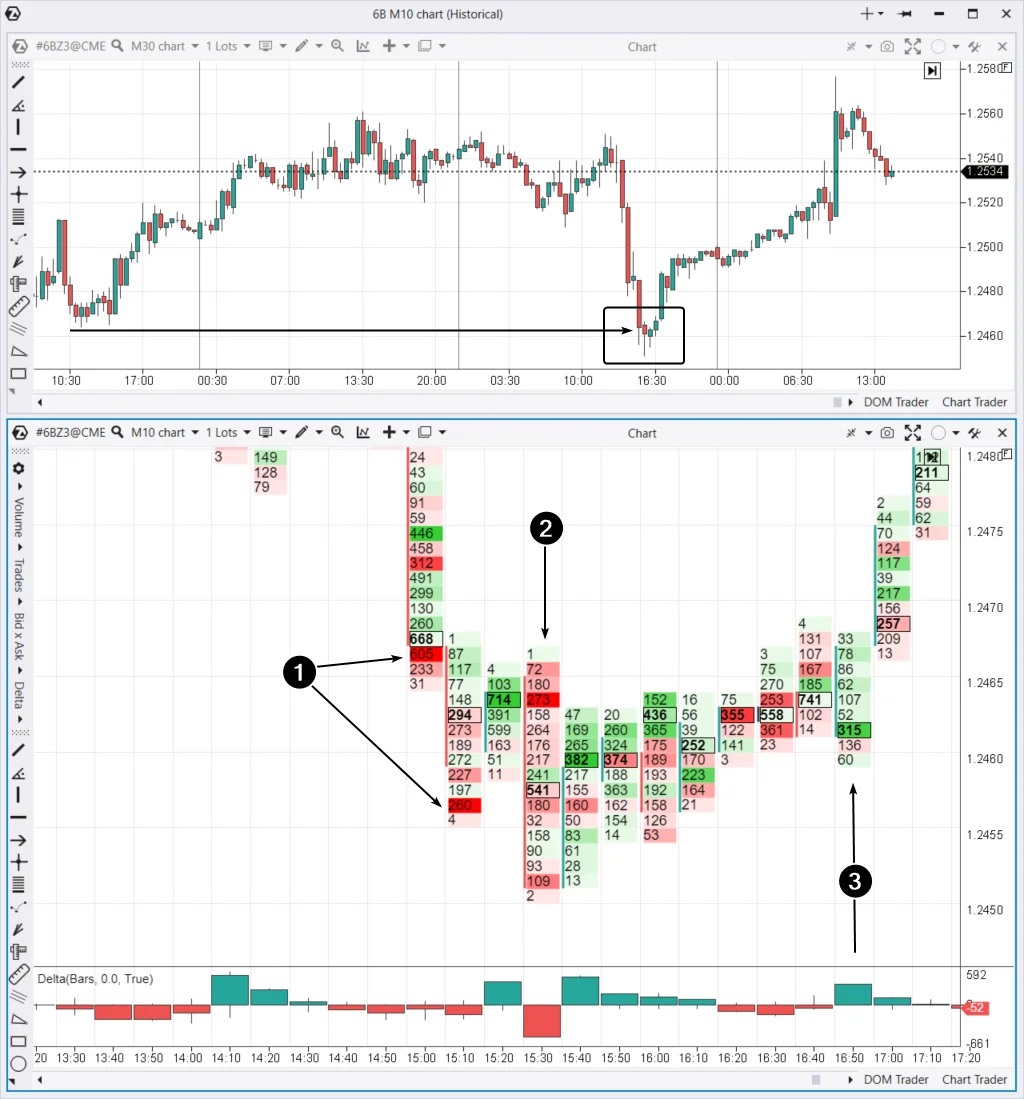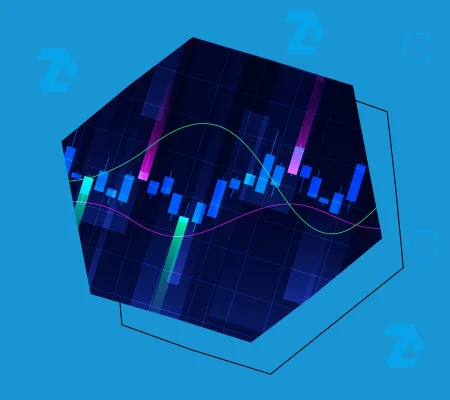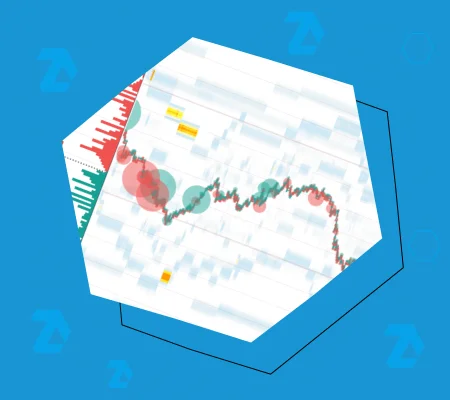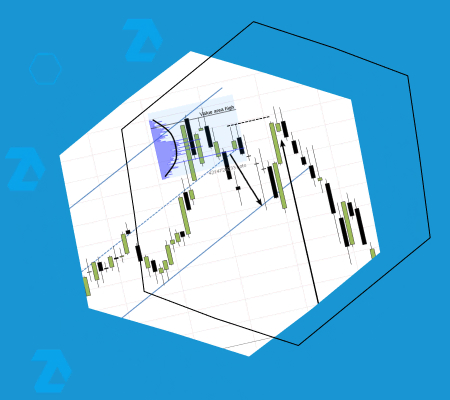The cluster chart shows:
- a spike in positive delta on candle A. However, the next candle forms a bearish engulfing pattern. Then, something similar to what you have already seen in the Bitcoin futures chart happens.
- The price starts to rise almost inertially along an invisible trendline, and on candle B, it forms a false breakout of the high A. It triggers a sudden surge in sellers’ activity.
We have enough confirmation that the forming breakout of the high (1) is false. Let’s assume we enter a short position at a price of 81.80. Where should we place the stop and take profit?
Let’s start with the take profit. Since we are trading false breakouts, let’s set the take profit below the previous low, specifically, below low (2). Let’s say 80.20. The potential = 81.80 – 80.20 = 1.60. For the cotton futures market, this is equivalent to 160 ticks, with the cost of 1 tick being $5. So, trading with one contract could potentially yield a profit of 5 * 160 = $800.
Where to place the stop? Let the acceptable loss be four times less than the potential gain. 800 / 4 = $200, and 200 / 5 = 40 ticks. Therefore, the stop-loss level would be 81.80 + 0.40 = 82.20.
Of course, there are circumstances related to overnight positions, but to illustrate the idea of stop and take profit calculation, let’s not consider them.

